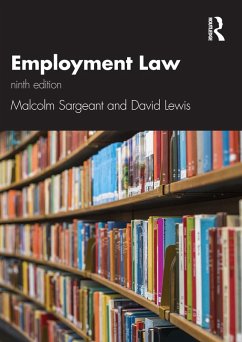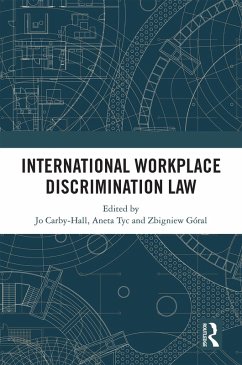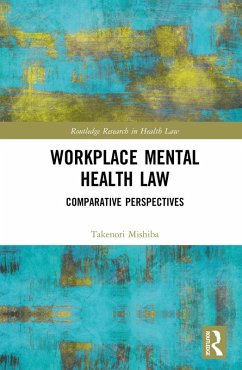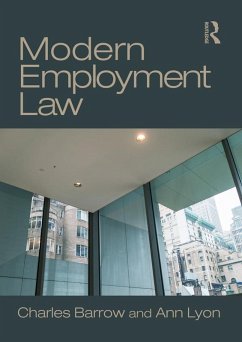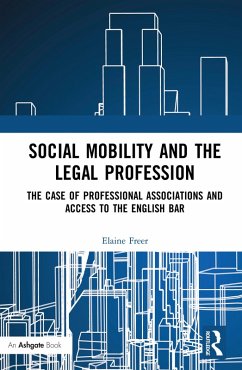
Discrimination and the Law 2e (eBook, PDF)
Versandkostenfrei!
Sofort per Download lieferbar
42,95 €
inkl. MwSt.
Weitere Ausgaben:

PAYBACK Punkte
21 °P sammeln!
Discrimination and the Law provides an exploration and evaluation of discrimination law, focusing primarily on discrimination in employment. Introducing readers to the concepts of equality and the historical origins of discrimination law, Malcolm Sargeant explores the wider political, social and economic contexts through which discrimination law has evolved. The second edition has been thoroughly updated and includes a new chapter considering discrimination against trade unionists, discrimination against 'non-standard' workers as well as the public sector equality duty.The book begins with an ...
Discrimination and the Law provides an exploration and evaluation of discrimination law, focusing primarily on discrimination in employment. Introducing readers to the concepts of equality and the historical origins of discrimination law, Malcolm Sargeant explores the wider political, social and economic contexts through which discrimination law has evolved. The second edition has been thoroughly updated and includes a new chapter considering discrimination against trade unionists, discrimination against 'non-standard' workers as well as the public sector equality duty.
The book begins with an examination of what is meant by such concepts as equality and discrimination followed by an analysis of the Equality Act 2010 and the impact of EU and international law. All the protected characteristics contained in the Equality Act 2010 are critically considered (age, disability, gender reassignment, marriage and civil partnership, pregnancy and maternity, race, religion or belief, sex, sexual orientation). Issues not covered by the legislation such as those relating to multiple discrimination and caste discrimination are also analysed.
Important cases from the UK courts as well as international courts are considered. The book also contains an appendix with the most relevant parts of the 2010 Act. Important cases are highlighted in the text and some reflections as the basis for further discussion are included at the end of each chapter.
This is an essential introduction to the wide-ranging law relating to discrimination in the UK for law, HRM and business students.
The book begins with an examination of what is meant by such concepts as equality and discrimination followed by an analysis of the Equality Act 2010 and the impact of EU and international law. All the protected characteristics contained in the Equality Act 2010 are critically considered (age, disability, gender reassignment, marriage and civil partnership, pregnancy and maternity, race, religion or belief, sex, sexual orientation). Issues not covered by the legislation such as those relating to multiple discrimination and caste discrimination are also analysed.
Important cases from the UK courts as well as international courts are considered. The book also contains an appendix with the most relevant parts of the 2010 Act. Important cases are highlighted in the text and some reflections as the basis for further discussion are included at the end of each chapter.
This is an essential introduction to the wide-ranging law relating to discrimination in the UK for law, HRM and business students.
Dieser Download kann aus rechtlichen Gründen nur mit Rechnungsadresse in A, B, BG, CY, CZ, D, DK, EW, E, FIN, F, GR, HR, H, IRL, I, LT, L, LR, M, NL, PL, P, R, S, SLO, SK ausgeliefert werden.




